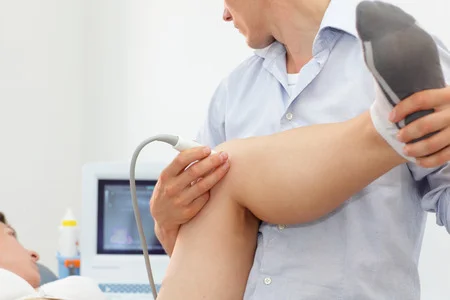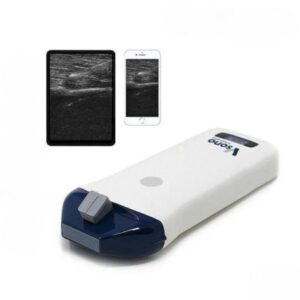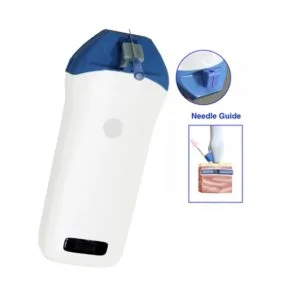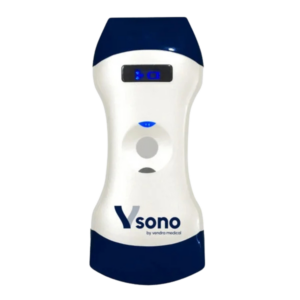Musculoskeletal ultrasound (MSK US) is a diagnostic technique used to capture images of the muscles, tendons, ligaments, nerves and identify structural changes within tissues and joints throughout the body. This technique helps diagnose sprains, strains, tears, trapped nerves, arthritis, and other musculoskeletal pathological conditions. MSK US is noninvasive and does not use ionizing radiation.
What can musculoskeletal ultrasound diagnose?
MSK US is typically used to help diagnose:
- Inflammation or fluid within the bursae and joints.
- Muscle tears, fluid collections or masses.
- Foreign bodies in the soft tissues (such as splinters or glass).
- Soft tissue masses in children
- Rheumatoid arthritis
- Ligament sprains or tears.
- Ganglion cysts.
- nerve entrapments such as carpal tunnel syndrome.
- Soft tissue tumors.
How does musculoskeletal ultrasound work?
In order to perform an MSK US, high-frequency sound waves are needed to detect musculoskeletal injuries or other pathological conditions.
Ultrasound scanning captures images in real-time. Therefore, this method can be used to evaluate both static and dynamic conditions of musculoskeletal structures.
Using high-resolution scanning produces detailed anatomic images of tendons, nerves, ligaments, joint capsules, muscles, and other structures in the body.
Vendra Medical provides a clearer explanation of the procedure “Denser substances such as bone reflect the waves back while liquid, including water, allows the waves to pass through. The transducer converts wave activity into accurate pictures of muscle, tendon, and other structures.”
What’s the best ultrasound scanner for MSK?
diagnostic ultrasound applications were [initially] limited due to poor resolution and lack of real-time imaging capability.
According to Pinzon and Moore (2011)
However, this problem has been solved with the introduction of handheld light ultrasound scanners such as the Vsonos.
Since a high-frequency probe is needed, then a linear ultrasound scanner is the perfect fit for this procedure. Henceforth, we recommend the Wireless Linear Ultrasound Scanner: Vsono-L1. With a frequency ranging from 7.5 to 10 MHz, the Vsono-L1 sends out inaudible, high-pitched sound waves that travel through the body, allowing for a clear superficial scanning and an easier diagnosis.
In addition to using the US to diagnose tendinosis, partial- or full-thickness tendon tears, nerve entrapments, muscle strains, ligament sprains, etc., practitioners can perform real-time interventional procedures for treatment modalities. In this case, an ultrasound scanner with a needle-guide, such as the Mini-Linear Wireless Ultrasound Scanner: Vsono-ML2
Who can perform an MSK US?
- Radiologist
- Orthopedist
- Rheumatologist
- Ultrasound technician
- Physical therapist
- Sports physician
- Rehabilitation practitioners




